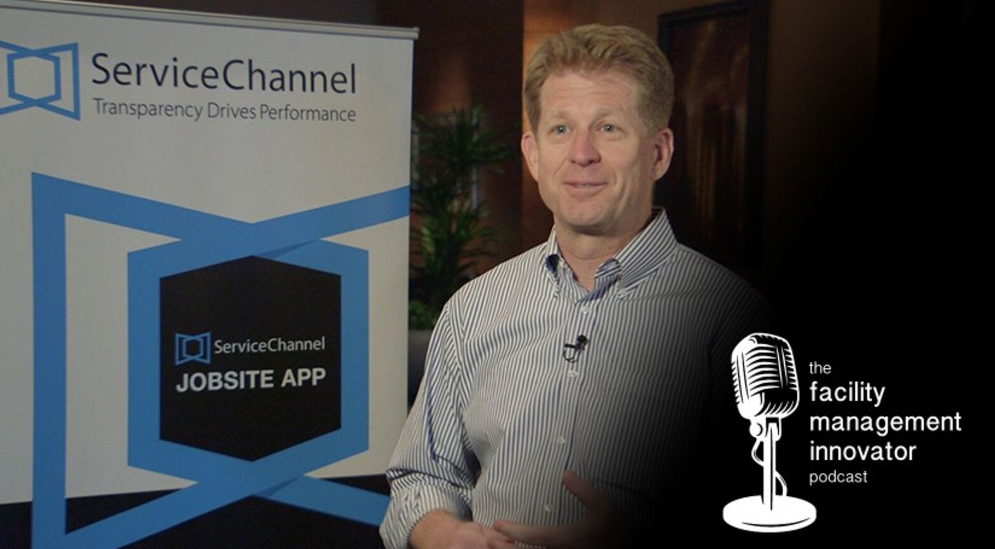How loT Can Be Used for Your Maintenance Strategy
How loT Can Be Used for Predictive & Proactive Maintenance
loT, or the Internet of Things, technologies are increasingly common across facilities management. IoT represents the interconnection between devices and networks, often through sensors, ranging from smartphones to computers to thermostats. When connected, such devices send, collect, and analyze data, making valuable, real-time information accessible.
Applying IoT in a facilities context works best in tandem with a cloud platform (like a SaaS tool) and a data analytics function that provides actual insight from the collected device data. Such a toolset enables optimized predictive and proactive maintenance for a wide range of facility assets in various industries.
What is Predictive Maintenance?
Predictive maintenance uses loT and data analytics software in conjunction with machine learning (ML) and/or artificial intelligence (AI) to construct and continuously build upon a predictive model. The predictive model makes detecting potential problems possible even before they occur.
How IoT is Used in Predictive Maintenance
Numerous IoT sensors are put to work in the predictive maintenance process. These sensors help detect, collect, and store important data for tracking and monitoring machinery and assets across your entire facility. Here’s how it works.
Sensor Deployment
IoT technology needs the right sensor data to do what it needs. So, your first step is to attach your sensors to your assets so your software can start collecting equipment data. After pinpointing which assets to monitor, the actual deployment is usually relatively simple.
In most cases, all you have to do is securely attach the sensor to its location using appropriate mounting hardware. This could be as simple as sticking it on with adhesive or as complex as bolting it to a structure. Check your equipment and consult your IoT predictive maintenance provider to find out what you need to do.
Data Collection and Analysis
The deployed sensors then get to work collecting data on the asset’s behavior. The data collected is sent to a centralized cloud server for data analysis. What the sensors are looking for can vary based on the equipment they are assigned to monitor and how they have been programmed. They could be looking at the machine’s performance, temperature, vibrations, and other relevant metrics.
After the collected data enters the cloud server, it’s stored and used to train machine-learning algorithms. This will help your and other businesses’ IoT predictive maintenance platforms get better at their jobs. Integration with other data-tracking platforms can also improve your system’s predictive analytics.
Alerts and Notifications
The biggest advantage of real-time monitoring is that your IoT predictive maintenance systems will promptly notify you of any issues. Not all equipment flagged will actually need repairs. So, it’s important to send human maintenance staff to investigate alerts. Remember, your sensor data can only predict possible issues based on past patterns.
Integration with CMMS
Historical repair data can be automatically logged into your CMMS, given the right integration. This data gathered can help you derive actionable insights about signs of equipment failure so you can plan prevention accordingly. For instance, if your predictive maintenance tools suggest that a high temperature is related to an asset’s failure, you may take measures to keep that asset cooler.
You can also track real-time sensor data to monitor the current condition of all machines. This lets you expedite repair times to prevent safety issues and reduce unplanned downtime. It’s also a way to proactively monitor critical assets that could lead to workflow disruptions if problems are left unchecked.
Machine Learning and AI
Predictive maintenance work is meant to be, well, predictive. Predictive models need historical data to assess the likelihood of future machine failures. IoT predictive maintenance software leverages artificial intelligence (AI) and machine learning (ML) to make that happen.
After you place sensors on your assets and asset data is collected on a centralized cloud platform, ML algorithms train themselves to detect the patterns that typically occur before asset downtime. Then, the system uses these patterns as a reference to predict future outcomes based on new real-time data science as it comes.
For example, if it notices the same combination of vibrations and temperature that precede when another piece of industrial equipment breaks down, it might predict that the machine showing these signs is about to malfunction.
You should also bear in mind that these ML algorithms may cross-reference other assets from other businesses’ data sources. This is beneficial because it helps your IoT predictive maintenance tool recognize possible signs of failure that may not have previously occurred at your facility.
The Top 9 Benefits of IoT Predictive Maintenance
1. Reduced Downtime and Costs
Equipment downtime is costly. Not only do you need to deal with reactive maintenance costs, but you also face lost profits due to lost productivity and production delays. Predictive maintenance systems can predict equipment failure before it happens. As a result, you can expedite your regularly scheduled maintenance to prevent machine failure.
2. Optimized Resource Allocation
Instead of running traditional routine maintenance checks, predictive models can help detect potential issues even before they arise or are due to occur. This way, you can save money on the labor costs associated with traditional maintenance services and better allocate your resources.
Once your IoT-based predictive maintenance tools detect anomalies, your maintenance teams can immediately check on the flagged assets. Doing this helps you better use your workforce and avoid unplanned downtime.
3. Extended Equipment Life
Even without predictive maintenance solutions, preventative maintenance is always a good practice. Fewer breakdowns mean less wear and tear on your equipment, ultimately increasing equipment lifespans.
Because predictive maintenance software can gather data about every asset’s condition, you can better schedule maintenance. The data shows how long each asset will last before you risk potential failures. You can then schedule preventative equipment maintenance well before that time.
4. Improved Safety
Equipment malfunction is as much a worker safety issue as a business continuity issue. IoT-based predictive maintenance tools address this issue in several ways.
First, it reduces the chance of your equipment becoming a safety hazard. Second, it helps your workers detect all the equipment to exercise caution around. That’s because they can check the condition of your machines from anywhere, as long as they have an internet connection.
5. Easier Adoption of Predictive Maintenance
Using loT is extremely beneficial as adopting predictive maintenance becomes more commonplace. In conjunction with Al and machine learning technology, as well as monitoring your assets in real-time, loT is important in developing any predictive maintenance strategy.
Instead of running traditional routine maintenance checks, predictive models can help detect potential issues even before they arise or are due to occur. You can reduce labor and costs associated with traditional maintenance services by properly integrating a viable proactive and predictive maintenance strategy.
6. Data-Backed Recommendations
IoT and predictive maintenance strategies are backed by data to provide complete and total control over any installed system.
An integrated, proactive maintenance strategy ensures that any failure data will also be collected, analyzed, and stored in real time using both big data and cloud solutions. A highly transparent proactive system can detect operating system failures, equipment malfunctions, and data corruption.
A data-backed system provides complete historical logging of actions taken, sensors triggered, and even decisions made by those who tend to specific machines or equipment.
In many instances, industrial IoT (llOT) devices and solutions are used to help with implementing a proactive maintenance strategy, especially with smaller entities. Utilizing tools such as simple sensors, input/output controllers, and a traditional power supply can all work to complete the setup of a basic loT system designed for variable tracking.
Recalling potential repair data utilizing the CMMS, or computerized maintenance management system, is also possible within specific equipment. Recalling repair data can provide the necessary operating information as well as potential wear patterns that have led to or caused machine or equipment failure.
7. More Accurate Inventory
Manage inventory, facilities, machinery, and equipment seamlessly with a predictive maintenance model. Proactively monitor equipment and inventory for potential issues or signals that indicate maintenance is required before downtime occurs.
Reduce manual labor and optimize the need for potential repairs, updates, and even replacement parts as necessary. Improved inventory accuracy can streamline the management of all equipment and machines in your facility. Use predictive models to free up time to focus on other aspects of your facility.
8. Real-Time Data
The use of real-time data is invaluable for proactive and predictive maintenance strategies. With the help of M2M, or machine-to-machine communication, alongside loT, the collection of data and pattern detection is optimized and simplified.
One singular network to collect, share, and communicate data allows original equipment manufacturers (OEMs) to analyze data while aggregating it for future predictive models. Mapping potential problem behaviors and implementing sensors that trigger reports based on machine specifications help deliver the real-time data necessary for increased uptime and customer satisfaction.
9. Remote Access to Your Assets
Handling broken down machinery, equipment, or even entire facilities can quickly become costly and, in some cases, permanently damage a brand and its reputation. With remote access to all assets, managing potential hazards, future incidents, and even future equipment failures can be done from any location with a wireless internet connection.
To get the most out of managing remote assets with loT, it’s essential that the loT devices can successfully interact with data tracking platforms. The ServiceChannel platform can help your facilities team connect with proper networks to help streamline the protection of remote assets, even those that require scaling.
Move Your Facility Into the Future with ServiceChannel
From improving asset reliability to reducing overall maintenance costs, IoT can help move your facility forward into the future. Yet, managing and monitoring a big data warehouse can be complicated. No matter how advantageous and streamlined it is, you still need a comprehensive platform to keep track of all that data.
Luckily, ServiceChannel offers a specialized platform to help you face that challenge. Our solutions are the perfect complement to any facility’s IoT-based predictive maintenance software system. Contact us today to supercharge your facility with IoT and a clear, proactive maintenance plan.



